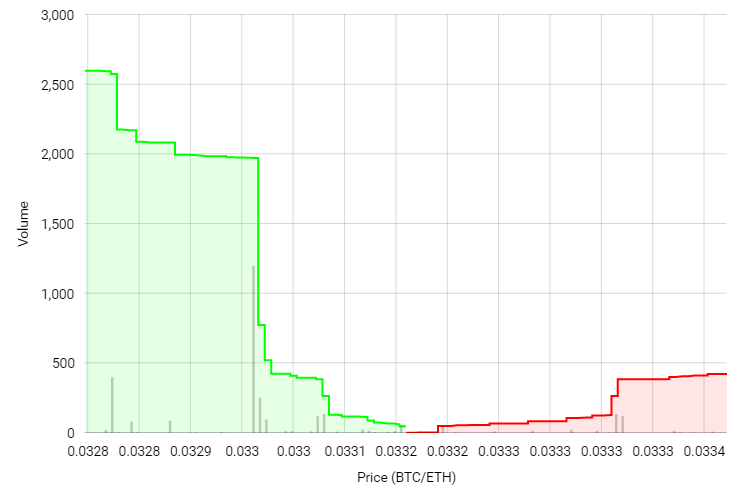
The law of supply to operate these other factors except its price should hold constant or unchanged. The law of supply or supply hypothesis gives us the relationship between price and quantity supply of the commodity. It states that other things remaining the same, the quantity of any commodity that a firm will produce and offer for sale rises with a rise in its price and falls with a fall in its price. It means the law of supply shows that higher the price, the larger is the quantity supply; and lowers the price; the smaller is the quantity supply. Therefore, as per the law of supply, the quantity supply is positively related to the price of the product.
Zevia Appoints Bill Williamson as Chief Supply Chain Officer – Yahoo Finance
Zevia Appoints Bill Williamson as Chief Supply Chain Officer.
Posted: Tue, 08 Aug 2023 10:58:00 GMT [source]
The law of supply can be illustrated through
the supply schedule as shown in the above supply curve SS’. By plotting the
various combinations of price and quantity supplied, we get different points S,
M, N, Q, R and T. By joining these points, we get our desired supply curve SS’,
having positive slope as shown in the above figure. The law of supply is also based on the assumption of ceteris paribus i.e., other things remaining the same assumptions. Here other things include the determinants of supply except for own price of the commodity-like price of related goods, government policy, input prices, the goal of the firm, nature of the industry, and so on.
What Is a Good Example of the Law of Supply?
For example, in the case of rise in a product’s price, sellers would prefer to increase the production of the product to earn high profits, which would automatically lead to an increase in supply. The law of supply can be better understood with the help of supply schedule, supply curve, and supply function. The law also assumes that the sellers do not speculate about the future changes in the price of the product. If, however, sellers expect prices to rise further in future, they may not expand supply with the present price rise. Price is a dominant factor in the determination of the supply of a commodity.
- The higher the price, the greater the incentive for the firm to produce and supply more of a commodity in the market, other things remaining the same.
- It is because of the relationship between price of a commodity and its quantity supplied.
- Refers to a supply schedule that represents the different quantities of a product that all the suppliers in the market are willing to supply at different prices.
- Alternatively, it can lease greater employees and growth the supply of bread.
When the price of a commodity increases, the seller increases the quantity
supplied. The profit of seller increases and the aim of seller is to profit
maximization. Based on the above assumption the law assumptions of law of supply of supply can be explained with help the help supply schedule and supply curve. In such cases, the supply of a product falls with the increase in the price of a product at a particular point of time.
Exceptions of Law of Supply
In the above schedule, price and quantity provided flow in the same route. When the price of a commodity is Rs. 10 then 100 kg is demanded of that commodity. Price increased from Rs. 10 to Rs. 20, then the amount provided improved from one hundred kg to two hundred kg. Commenting on the relevance of supply curve, Prof. Baumol writes, “The supply curve is, strictly speaking, a concept which is usually relevant only for the case of pure (or perfect) competition.
- “Other things remaining unchanged, the supply of a commodity rises i.e., expands with a rise in its price and falls i.e., contracts with a fall in its price.
- During a given period of time, it is assumed that the scale of production is held constant.
- Why such situation because workers normally prefer leisure to work after receiving a certain amount of wage.
- At better prices, manufacturers are inquisitive about imparting extra goods inside the marketplace because of appeal from the aspect of beneficial earnings.
- When we draw a supply curve we assume that the prices of other products remain unchanged.
- In the case of the auction sale, the law of supply is not applicable.
As shown by the arrow marks, at each price such as P1, P2, P3, the quantity supplied on the supply curve S”S” has declined as compared to the supply curve SS. So far as short-run supply curve of the industry under perfect competition is concerned, it is a mere lateral summation of the supply curves of the firms. On the other hand, if on the expansion of industry external economies outweigh the external diseconomies, the industry will be decreasing-cost industry and its long-run supply curve will be downward sloping. As a consequence, in case of decreasing-cost industry in the long-run more will be supplied at a lower price.
Table of Contents
If there is a tendency of increasing prices at present period, the sellers
increase quantity supplied for the lust of profit. Now they want to maximize their profit due to good
present circumstances. According to the law of supply, the quantity supplied increases with a rise in the price of a product and vice versa while other factors are constant. The other factors may include customer preferences, size of the market, size of population, etc.

If price of a commodity decreases and cost of production
also decreases, at the same time, the quantity supplied does not decrease and
profit remains constant. The basic reason behind the law of supply (i.e., positive relation between price and quantity supplied) is the way cost changes as output is expanded to offer more for sale. To produce more of a product, firms have to devote more resources to its production.
What Is the Law of Demand?
Fourth, for the law of supply to hold it is assumed that technology or input prices remain constant when price of a good rises. If there is improvement in technology or fall in input prices when firms expand their output, then more supply of the product may be made at a lower price. The law of supply relates to this functional relationship between price of a commodity and its supply. In contrast to the inverse relationship between the quantity demanded and the changes in price, the quantity supplied generally varies directly with price. That is, the higher the price, the larger is the quantity supplied of a commodity.

When the price of an item rises, sellers are eager to supply additional things from their stocks. However, the producers do not release significant amounts from their stock at a significantly cheaper price. They work on building up their inventory in anticipation of potential price increases in the future.
For the supply curve to exist, market should have large number of sellers, and for demand curve, there must be large number of buyers. The model of supply and demand also assumes that both buyers and sellers have good information of product’s qualities and availability. The law of supply states that price and quantity supplied are inversely related. It states that “other things remaining the same the quantity supplied of a commodity extends with a rise in its price and contracts with a fall in its price”.
The supply depends on the demand response of the consumers and the revenue generated from sold goods. The law of supply says that as the price of an item goes up, suppliers will attempt to maximize their profits by increasing the number of items for sale. It is the situation in the economy in which all the economic activities like production, employment, consumption, investment, etc. decrease sharply. So, the suppliers supply more even at a low price due to fear of further fall in the price due to the worse condition in the economy. If the business firm needs a large amount of liquidity or cash, it may sell a large amount of the product lowering the price. If the business firm has to close its old business to start the new one, it has to clear all the stocks of goods.
Benson Hill Announces Second Quarter 2023 Financial Results – Business Wire
Benson Hill Announces Second Quarter 2023 Financial Results.
Posted: Wed, 09 Aug 2023 11:00:00 GMT [source]
This implies that imposition of a sales tax or excise duty causes a leftward shift in the supply curve. The opposite happens in case of the supply of a commodity on which government provides subsidies. Further, agricultural production in India greatly depends on the rainfall due to Monsoon. If Monsoon comes in time and rainfall is adequate, there are bumper crops, the supply of agricultural products increases. However, in a year when Monsoon are untimely or highly inadequate, there is a sharp drop in agricultural output which cause shift in the supply curve of agricultural output to the left. Similarly, the imposition of an excise duty or sales tax on a commodity means that each quantity will now be supplied at a higher price than before so as to cover the excise duty or sales tax per unit.
The increase in taxes effects the investment and production and supply of goods
decreases. This is because the advanced technique would reduce the cost of production and make the seller supply more at a lower price. The law of supply expresses the change in supply with relation to change in price. In other words the main assumption of law of supply is that it studies the effect of price on supply of a product, while keeping other determinants of supply at constant. It is assumed that transport facilities and transport costs are unchanged.
Factors Determining Price Elasticity of Demand
The marginal cost of the product will increase with an increase in output due to the operation of diminishing returns. It is believed that with an increase in production the marginal cost also is increased. Thus, producers are ready to produce larger quaintly and offer them to sell in the market only at higher prices to cover the higher cost of production.
This will increase the overall supply of televisions in the market. At some point, the abundant supply will tend to cause prices to moderate and fall. The supply curve is upward sloping because, over time, suppliers can choose how much of their goods to produce and later bring to market. The increase in the price of the commodity motivates not only the existing producers but also many new prospective or potential producers in the market. For example, the rise in the price of onion will motivate the farmers to produce more quantity of onion in place of potato and other vegetables.
